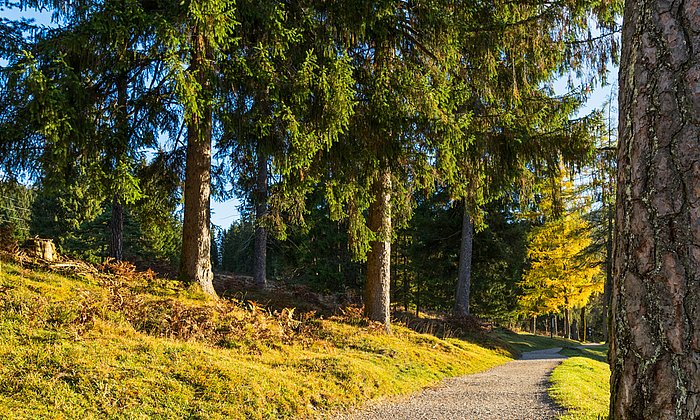A new cooperation between TUM and Berchtesgaden National Park has begun
Exploring biodiversity and climate change in the Alps

Today, Rupert Seidl, Professor for Ecosystem dynamics and Forest management in Mountain landscapes at TUM and Head of the Department of Research and Monitoring at National Park Management Berchtesgaden, as well as his colleague Dr. Sebastian Seibold presented the long term biodiversity monitoring project at the alpine lake Königssee. This project will generate reliable data about various species stocks ranging from fungi and plants to insects and even birds or bats.
“The loss of biodiversity is a global phenomenon. It has grown to a point at which we not only have to question traditional nature protection approaches, but also have to worry about sharp declines in the efficiency of ecosystems,” Seidl stated. He added that decreasing numbers of species across all levels of the food chain were an observable fact.
Bavarian State Minister of the Environment Thorsten Glauber, TUM President Prof. Thomas F. Hofmann and Head of the National Park Dr. Roland Baier today affirmed their cooperation, which is to be expanded with additional personnel.
All participants agreed to form this partnership in 2018 in order to examine the alpine ecosystems as well as the effects of climate change. The results are to be made applicable to ecosystems in other mountain regions as well. Prof. Seidl is both Chair of the newly created Professorship at TUM and Head of Research at the National Park.
Measuring stations for climate, insects and animal sounds
One particular feature of Berchtesgaden National Park is its high diversity of natural habitats that have been under protection for decades. The park also contains the tightest grid of alpine climate measurement stations.
“This means that we already have large amounts of data at our disposal. We will expand this data by evaluating plant mappings, insect traps, camera traps for vertebrates, acoustic recordings of birds and bats as well as soil samples for fungi and bacteria,” Seidl explained. He added, “Climate effects in the National Park are not overprinted by human activity; therefore we have particularly good conditions for studying climatic changes in the ecosystems.”
“We have assembled a set of methods for registering biodiversity and species stocks in the National Park. These national parks are particularly significant as their primary purpose is nature protection,” Seibold said. The researches expect to have first results within just one year, such as information about the prevalence of certain species at certain elevations. However, the measuring stations are meant to remain installed permanently to obtain time series data.
Combining nature protection management and fundamental research
Bavaria's Environment Minister Thorsten Glauber expresses his concern and his joy at the successful cooperation with TUM: “We are opening a new chapter in the exploration of the Alpine world. The aim is a comprehensive inventory of animals, plants and fungi in the Berchtesgaden National Park. In the national park, science and the latest data acquisition methods with state-of-the-art technology meet unique nature. We want to learn from nature. The potential of the research object National Park for improved nature and species protection is unique, as are the opportunities from our collaboration with the Technical University of Munich."
Dr. Roland Baier, Head of Berchtesgaden National Park, said, “Within national parks, the most important goal is to enable natural dynamics; a kind of natural development without target or final conditions and without human interference. This leads to national parks being unique research landscapes. The two Bavarian national parks are using this potential in this project in close partnership. Due to our infrastructure, we have excellent opportunities to gather information about the evolution of biodiversity in the National Park, also on a long-term scale.”
TUM President Prof. Thomas F. Hofmann emphasized, “The outstanding expertise available in the National Park regarding natural protection management in combination with the excellent research competencies at TUM opens up unique scientific perspectives. We want to gather new insights about the consequences of climate change for biodiversity. These insights shall directly benefit nature protection on location in the Alps but also provide assistance on a global scale in order to cope with one of the biggest challenges for humanity.”

Technical University of Munich
Corporate Communications Center
- Dr. Katharina Baumeister-Krojer
- katharina.baumeister@tum.de
- presse@tum.de
- Teamwebsite
Contacts to this article:
Prof. Dr. Rupert Seidl
Technical University of Munich
Ecosystem Dynamics and Forest Management in Mountain Landscapes
Hans-Carl-von-Carlowitz-Platz 2, 85354 Freising, Germany
Tel.: +49 8161 71 4690
Rupert.Seidl@tum.de

